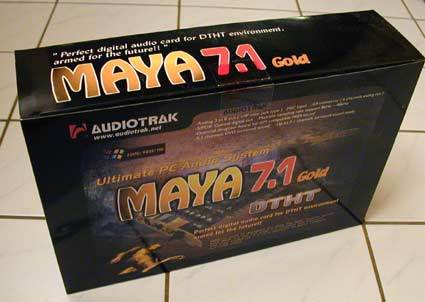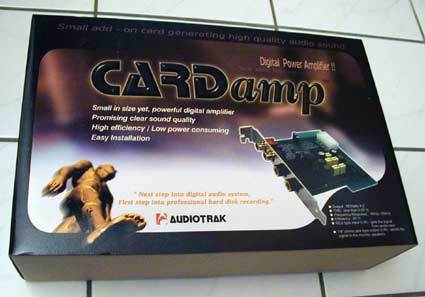Raising PC Audio Standards To Hi-Fi Levels: Audiotrak Maya 7.1 Gold and CARDamp
Introduction
The future seems to be a bit uncertain for sound card manufacturers. Only a few years ago, any computer that was meant to play sound had to be equipped with a sound card - today, most motherboards come with basic sound features, making it difficult for the industry to develop affordable alternatives that are able to provide real benefits.
Some of you may still remember the good old Adlib synthesizer cards that were the first companions we had in our early computer gaming days. After that, Creative Labs dominated the sound market, thanks to its Sound Blaster standard. Creative's development path for Sound Blaster was relentless. The first Sound Blaster (8 Bit mono) was soon replaced by Sound Blaster 2.0 (8 Bit stereo). Sound Blaster 16 (16 Bit stereo) followed, and than was enhanced by MIDI capabilities and surround sound (AWE32, 64, PCI128, SB Live!), and now we have the highly touted Sound Blaster Audigy .
Today, the required hardware for sound output can be put into a tiny chip, namely the AC97 codec. Usually, the CPU has to process most of the data load - but at today's performance level, that's not an issue.
So why should one buy a dedicated sound card if on-board solutions provide satisfactory features? We will take a look at some of the advantages of an add-on card, such as multi-channel inputs and outputs and a high dynamic range.
Audiotrak is one company that focuses on an issue that all sound cards suffer from: the power deficit. Usually, integrated amplifiers at 2-3 W output are just about good enough to attach headphones or to connect the computer to your stereo, but you are on your own if you want to attach two hi-fi speakers directly. You can either go and buy a computer speaker system or take a look at CARDamp - it could help you out.
Get Tom's Hardware's best news and in-depth reviews, straight to your inbox.

Patrick Schmid was the editor-in-chief for Tom's Hardware from 2005 to 2006. He wrote numerous articles on a wide range of hardware topics, including storage, CPUs, and system builds.

